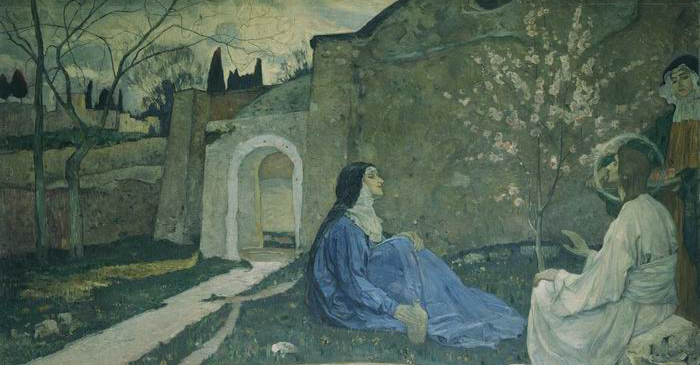When one of the foremost progressive Protestant preachers of the day cites your academic paper — at length — in a sermon at one of the most-watched annual gatherings of the year, you should be prepared for a sudden influx of interest from all over.
That certainly is the case for Elizabeth Schrader, a doctoral student at Duke University, whose work on textual variations in the Gospel of John became the subject of a now viral sermon preached at Wild Goose Festival by Diana Butler Bass.
Bass is a historian of Christianity and prolific author, followed widely by progressive Christian pastors and laity alike. She was a keynote speaker at this year’s Wild Goose Festival, an upscale Gospel Woodstock for progressive Christians. When Bass posted an audio recording of the sermon online, it was downloaded 10,000 times within a few hours. Then she posted a transcript that added to the viral interest, producing more than a quarter-million reads and downloads to date.
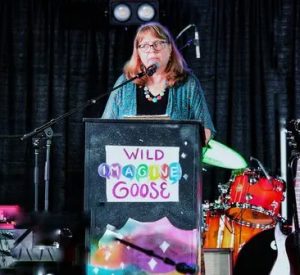
Diana Butler Bass preaching at Wild Goose Festival
The viral interest is driven by the content of Schrader’s research, which mainly has been discussed in academic circles but has potential implications for how some key figures in the Gospel of John should be identified. Those figures are Mary and Martha, most often portrayed as sisters, and Mary Magdalene, a crucial and controversial figure in the Gospels’ narrative of the life and ministry of Jesus.
Which Mary?
As Bass notes in her sermon, one problem is that “Mary” was a common name in the first century, and the Bible contains more than one Mary in its accounts. She compares this to naming her daughter Emma, not realizing that “Emma” would become one of the most popular names for girls born in 1997, so that when her Emma entered school, she was surrounded by other girls named Emma.
In the Bible, this confluence of Marys has been exacerbated by readers casually conflating stories from John 11 and Luke 10, she said.
John 11 tells the story of “a certain man” who was ill who lived in “Bethany, the village of Mary and her sister Martha,” according to the New Revised Standard Version of the Bible. Jesus was urged to visit his friend and heal Lazarus, but he delayed, and the man died. Nevertheless, when Jesus showed up, he raised Lazarus from the grave.
Luke 10 tells the story of Jesus entering “a certain village, where a woman named Martha welcomed him into her home. She had a sister named Mary, who sat at the Lord’s feet and listened to what he was saying. But Martha was distracted by her many tasks.”
Traditionally, these sisters are assumed to be the same people mentioned in Luke and in John. But there’s a problem, Bass explained: Luke’s Gospel never says this happened in Bethany, as does John’s Gospel, and in fact Bethany would have been in the opposite direction of where Jesus was traveling as Luke’s narrative tells it. Therefore, it is implausible that the household described by John is the same household described by Luke, she said.
Traditionally, these sisters are assumed to be the same people mentioned in Luke and in John. But there’s a problem.
And that’s not all, Bass continued. “Then there’s an interesting identification of Martha where it says, ‘Martha welcomed Jesus to her home.’ And what’s fascinating about just that little phrase, just that small phrase, Mary and Martha are sisters in a patriarchal society. If they had a brother, that line would say, ‘And Martha welcomed Jesus to her brother’s home,’ because Martha doesn’t own a house. It’s not Martha’s home unless it is Martha’s home. The only way its Martha’s home is if Martha has no husband, no father and no brother.”
She concluded: “What we actually have here is two stories that our imaginations have run together, which our tradition has run together, which even commentators have run together. These are actually two different stories about two different families. This is as if people came home from school and said, ‘Emma Bass did something, something, something,’ and it was actually Emma Presing.”
A voice in the garden
Here’s where Elizabeth Schrader comes in. She’s a former singer-songwriter who once toured with Jewel and appeared on The Gilmore Girls. Schrader is an Episcopalian currently working on her dissertation in the Ph.D. program at Duke.
But to understand her story, we have to go back to how she got to seminary in the first place.
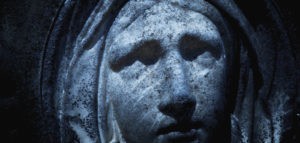
(Bigstockphoto)
Some years ago, the singer-songwriter sought refuge in the garden of a Catholic parish in the Prospect Heights neighborhood of Brooklyn, N.Y. She went there to pray in this garden dedicated to the Virgin Mary. That connected with her, because although a lifelong Episcopalian, she had been learning from a Catholic friend how to pray the Rosary.
As she prayed that day, seeking spiritual guidance, she heard an audible voice speak to hear: “Maybe you should talk to Magdalene about that.”
“It was so strange,” she recalled. “I don’t usually hear words in prayer. I usually get more feelings. And I was in the garden of the Virgin Mary,” not a garden dedicated to Mary Magdalene.
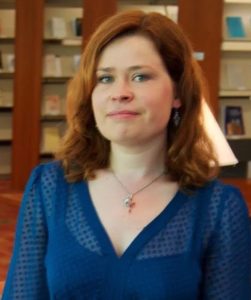
Elizabeth Schrader
Like Mary the mother of Jesus, Schrader treasured these things in her heart as she returned home. She sat down at her piano and wrote a song in two days — much faster than her normal pace.
That song, titled “Magdalene,” started a new spiritual journey that changed the direction of Schrader’s life. She walked to the Brooklyn Public Library to check out a copy of The Complete Idiot’s Guide to Mary Magdalene and that led in time to her enrolling in a master’s degree program at General Theological Seminary and now the Ph.D. program in New Testament at Duke.
Papyrus 66
Schrader’s curiosity about Mary Magdalene led her — even before starting her master’s program — to dig into the history of Mary and to study some of the oldest Greek manuscripts of the Gospel of John. From that study, she obtained online access to a transcription of the earliest known manuscript of chapters 11 and 12 of John’s Gospel, which is known as Papyrus 66.
There, she noticed something odd. An ancient editor had written in letters that changed the meaning of what originally had been written down. For example, John 11:1 as recorded in Papyrus 66 read: “There was a certain sick man, Lazarus of Bethany, the village of Mary and of Mary his sister.” There is no “Martha” in this text. Yet the scribe amended the text to change the second “Mary” to say “Martha” and to change the gender of the penultimate word to say “her” sister.
The two verses later, in John 11:3, the scribe crossed out the name “Mary” and replaced it with “the sisters,” altering the verbs from singular to plural.
There is no “Martha” in this text. Yet the scribe amended the text to change the second “Mary” to say “Martha” and to change the gender of the penultimate word to say “her” sister.
These revelations caused Schrader to dig deeper, to examine other ancient manuscripts and to attempt to reconstruct the history of this biblical narrative. Over time, she examined 250 copies of the Gospel of John and documented quite a lot of variation — “whether the verse’s wording introduces us to one sister of Lazarus, two sisters of Lazarus, or one sister of Mary.”
And three of the most important manuscripts shows these variations on the words “Martha” and “Mary.”
What she found “is not conjecture,” she said. “It is real readings made in real manuscripts. Martha is blinking in and out throughout the entire text transmission of John.”
Schrader created a data table of the various manuscripts to study the pattern. The end result: “One in five Greek manuscripts has some problem around Martha.”
The root of these variations is where she began her study, in Papyrus 66, which she calls “the oldest and most problematic” manuscript. It dates to around 200 CE, about 100 years after the writing of the Gospel.
In biblical studies, a century is very close to the source indeed. No original manuscripts of any New Testament books exist today, only copies dating 100 years or more.
No original manuscripts of any New Testament books exist today, only copies dating 100 years or more.
Schrader calls those missing years a “black box” era. “There’s always this little black box between what the author wrote and what the earliest manuscripts say. That’s usually at least 100 years. We can’t be certain what happened to the text in that black box.”
As a side note, Schrader said, this illustrates one of the problems with biblical inerrancy, which claims every word of the Bible is without error and was handed down by God. Most academics who are inerrantists qualify their belief as applying to the “original autographs,” meaning the manuscripts as first written. But no such manuscripts exist anymore, and those who study biblical texts — as Schrader now does — point out that there are thousands of textual variations in copies of the New Testament writings.
“That’s the difficulty with inerrancy,” she said. “You could say I believe in what the author wrote, but we don’t have the ability to attain it with certainty. … As far back as the textual record can be traced, you find multiplicity. It’s difficult to see things like that and to be an inerrantist.”
While she was still a master’s-level student at General Theological Seminary, Schrader’s work on Mary and Martha in John’s Gospel was published in the Harvard Theological Review.
Why does this matter?
Bass told the lengthy history of Schrader’s work in her sermon at Wild Goose and then drove home the point: If Schrader is right, she has documented that some of the earliest copyists of the New Testament became editors attempting to harmonize the narratives to line up. Thus, Luke 10 and John 11 need to match.
But the implications are even greater than that, Bass continued. The Gospels contain two important Christological confessions — one attributed to Peter in Mark, Luke and Matthew where he declares: “You are the Messiah, the son of the living God.” And the other until now attributed to a little-known character named Martha in John 11: “Yes, Lord. I believe that you are the Messiah. The one who’s come into the world.”
What if that second confession of Christ as Messiah wasn’t uttered by Martha but by Mary Magdalene?
But what if that second confession of Christ as Messiah wasn’t uttered by Martha but by Mary Magdalene?
There’s additional evidence for this, Bass added. “Tertullian, one of the most misogynistic of all of the ancient church fathers, actually wrote a bit of a commentary on this passage in John chapter 11. He writes circa 200. Commenting on this chapter, he says, ‘Mary, confessing him, Jesus, to be the Son of God.’”
Tertullian attributed the confession to Mary, not Martha, Bass said. “Tertullian said that was Mary. There was no Martha in that passage according to Tertullian. Did Tertullian’s copy of John have only Mary?”
And given how the patriarchs of the Christian church have scandalized Mary Magdalene, for her to be the confessor of Jesus’ divinity would be all the more astonishing, Bass suggested.
Response to the research
When Schrader’s research first was published in 2017, it was met by other textual scholars and even pastors with mild interest and some criticism, as evidenced on the Evangelical Textual Criticism blog.
For example, one online critic, James Snapp Jr., a pastor from Indiana, accused her of promoting a “conspiratorial agenda” through research that’s “not textual criticism.” Misogynistic responses from others were deleted by the forum moderator.
Schrader understands that the world of biblical textual criticism has been and remains largely a world inhabited by older white men. There are some prominent women in the field today, however, including some who are her mentors, such as her doctoral adviser, Jennifer Knust.
For a young woman new to the field to suggest these male scholars for centuries have misunderstood a key biblical text about women — that’s a steep hill to climb.
But for a young woman new to the field to suggest these male scholars for centuries have misunderstood a key biblical text about women — that’s a steep hill to climb.
Schrader’s work has also come to the attention of the single group that matters most when it comes to the biblical text, the Nestle-Aland Committee of the Greek New Testament. They have taken her research under advisement, but they move very slowly — which Schrader understands is necessary when serving as caretaker of sacred Scripture.
In the larger scheme of biblical textual studies, the overwhelming dominance by men could have created blind spots, Schrader suggested, explaining that others had read the same manuscripts she found. “I think it’s more about the importance of diversity. … If all the people who are looking at the manuscripts are white men, they might miss something.”
An ongoing process
In mainstream academic circles, Schrader’s work remains of interest but has not yet caused a great debate, explained Mikeal Parsons, professor and Macon Chair in Religion at Baylor University.
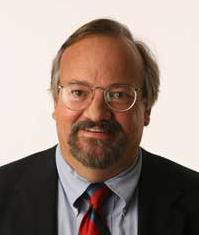
Mikeal Parsons
“The issue of the impact of patriarchy on early Christian texts and their subsequent interpretations is a serious one, generally speaking,” he said. “The Schrader thesis, however, is in its nascent stages — more than a ‘tempest in a teapot’ but not quite a ‘great debate’ that has demanded the attention of the field of New Testament scholars.”
Most serious scholars who are interested in this topic are waiting to read Schrader’s doctoral dissertation, which is still being written, he added. “In other words, the debate, if there is to be one over Schrader’s work, has yet really to take place.”
From his perspective, Schrader’s argument that Martha was added into the text of John 11 to diminish the role of Mary Magdalene in the story of Lazarus is “a fascinating thesis” that finds resonance with some other scholarly work.
Specifically, he cited the example of how copyists and interpreters appear to have replaced the feminine name “Junia” with the male “Junias” in Roman 16:7. It is not a new revelation that efforts were made to downplay the leadership roles of women in the early Christian movement, he said. “The question is, does a similar motivation explain all the textual variants Schrader considers?”
Given the facts she has unearthed, there are alternative explanations to consider.
“The most substantive alternative to Schrader’s view is that some of the variants are more plausibly explained as copyists’ errors, due to dittography (repeating texts) caused by homeoteleuton (same ending of Greek words).”
Tommy Wasserman, an internationally renowned textual critic and moderator of the Evangelical Textual Criticism blog, offered a balanced response to Schrader’s initial report: “I think Schrader’s findings — the mere textual data — are significant. Some commenters have suggested that they are all random scribal errors. I actually have the feeling that it is a mix. Some are random errors, others are different types of general tendencies, e.g., to elevate the man Lazarus, or to downplay Martha, or possibly redaction by a scribe like in the case of P66. This is all interesting and worth the research.”
On the other hand, he added, “I think it is extremely problematic to harvest the textual tradition and try to find one grand thesis that explains all the textual changes.”
Small expectations
For her part, Schrader has no expectation that her research will change anything other than the footnotes of English-language New Testaments, unless additional and earlier evidence emerges that Mary was deliberately edited to become Martha.
“Taking Martha out of the base text is not going to happen anytime soon.”
“Taking Martha out of the base text is not going to happen anytime soon,” she said. “I’m just hoping for the variants around Martha to be noted.”
But she knows even that can take time.
Because her research already has been peer-reviewed, it is taken seriously, she said. “Some are persuaded, and some are not. And that’s the nature of all scholarship. I have not proved that Martha was added to the Gospel of John, but I have made a competitively plausible hypothesis. … I have demonstrated that there is a problem around Martha in the transmission of the Gospel of John. The question is why.”
She affirmed the integrity of the members of the Nestle-Aland Committee: “They are cautious. They move slowly. What they decide to do with this, I trust them to make the right decision.”
Related articles:
After 30 years, the NRSV gets an update: Here’s what that means
I knew the truth about women in the Bible, and I stayed silent | Opinion by Beth Allison Barr
My quest to find the word ‘homosexual’ in the Bible | Opinion by Ed Oxford

